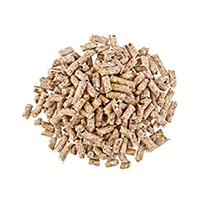Sheep Management
Sheep are once again increasing in popularity in the United States and in our trade area. The Equity has consultants that specialize in sheep, so we want to provide some basic management information.
Fresh water, feed and hay are essential for all animals including sheep. Be sure to limit copper intake and maximize selenium. Additional supplementation is necessary for market lamb gain.
In the spring, all ewes and lambs over six weeks old should be treated for internal parasites the day before turning them onto spring pasture. After the initial treatment, repeat every 3 to 4 weeks throughout the grazing season. Prior to pasturing, be sure to trim and check feet and run the entire flock through a foot bath and consider if you will utilize dogs, llamas or donkeys as pasture control to protect your sheep.
Shearing should be done in March, April, or May for any ewes that were not shorn prior to lambing. The wool can be marketed, so be sure to package the wool separately from white face versus blackface and blackface cross ewes.
Determine the rams you will use for the next breeding season, and once you have selected ewe lambs to be used as replacements, breed so they will lamb as yearlings. Be sure to vaccinate ewes for abortion diseases prior to breeding. Sheep are seasonal breeders and most breeds begin to cycle in late summer and are most fertile in fall. The average gestation period for sheep is 145 days, but can range from 140 to 159 days.
Two weeks before breeding, treat ewes and rams for internal parasites and start the practice of flushing ewes to improve lambing percentages.
Those that will not be replacements, should be marketed in the spring prior to the seasonal decline that occurs yearly heading into the summer months at anywhere from 50 to 120 pounds dependent upon the specific market you are reaching.
Six weeks prior to lambing, start supplementing tetracycline to reduce the incidence of abortions. Four weeks before lambing, vaccinate ewes for overeating disease and tetanus so these vaccines provide passive immunity to the baby lambs. Monitor ewes closely looking for signs of pregnancy disease.
At lambing, ewes produce antibody-rich colostrum prior to milk. Feeding colostrum to a newborn lamb is crucial to ensuring its health and future growth. Make sure they receive colostrum as soon as possible after birth. Drafts and dampness can result in baby lamb pneumonia, so be sure to keep the pens clean, dry and water, utilizing a heat lamp when necessary.
Lambs should be given an injection of selenium if selenium deficiency is an issue, and prior to two weeks of age lambs should be docked and castrated. When the lambs are four weeks of age, vaccinate for overeating disease then booster one week before weaning.


